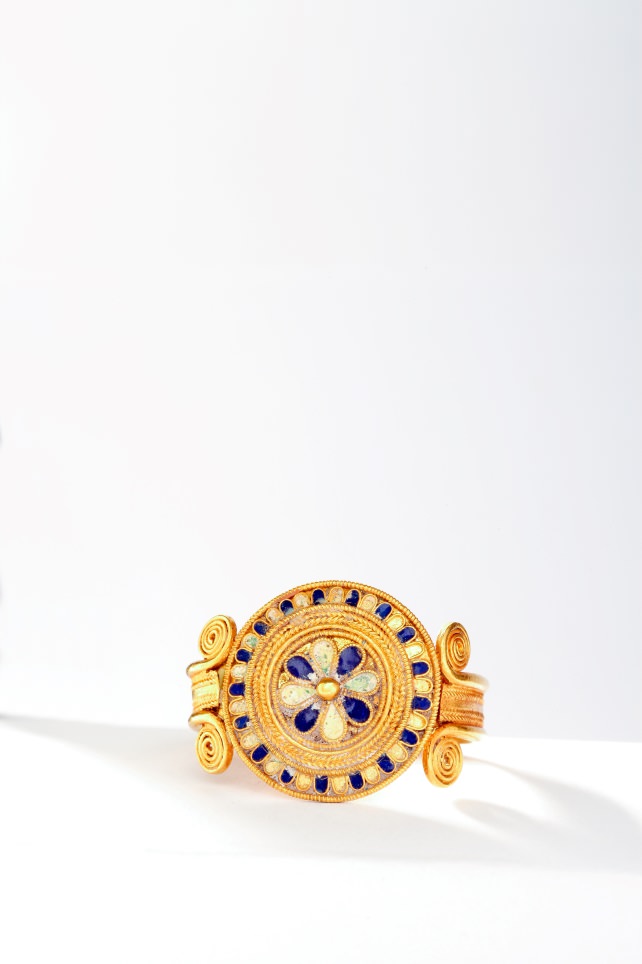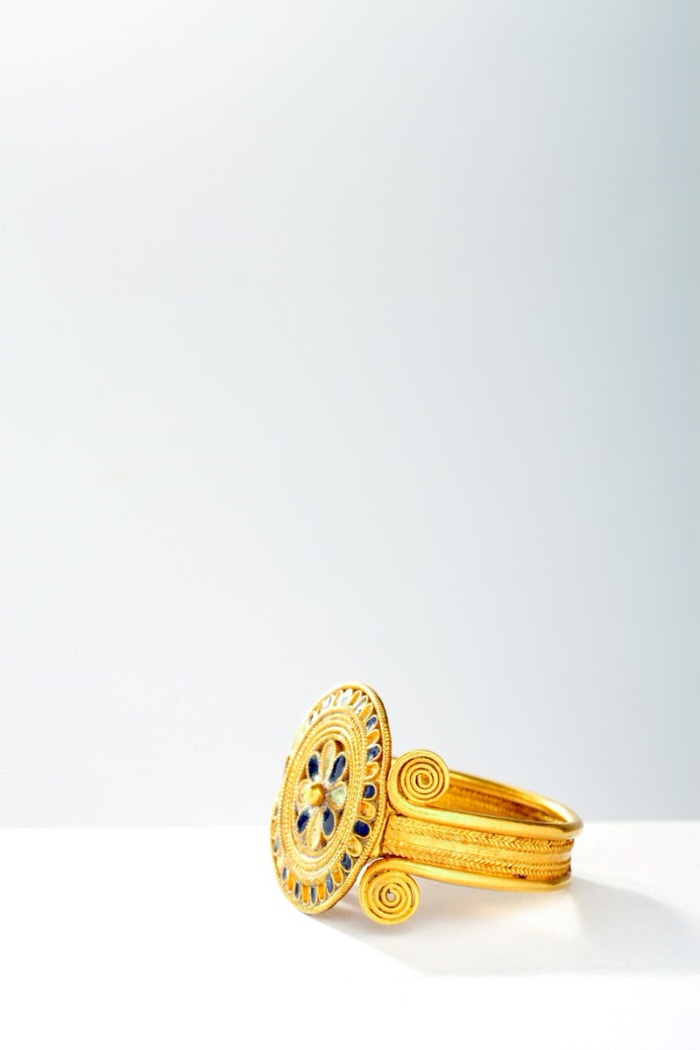Gold and enamel ring
Gold and silver jewellery of different shapes was unearthed from the necropolis in Sulky.
One of the most beautiful examples is gold with a so-called cloisonné decoration, an artistic enamelling technique already used in ancient Egypt and the Near East from the third millennium B.C, in which a few thin wires (filigrees) or metal strips were welded to a surface to be decorated thereby creating small cells (in French cloisons) inside which coloured enamel was cast, thus obtaining a sort of mosaic. The Sulky ring is worked according to this technique on a round setting, decorated with a central flower with alternate blue and white petals, surrounded by five filigree circles in turn framed by a series of small arcs which also alternate blue and white (fig. 1).

The flat knitted filigree band is welded to the setting, while two tubular foils ending in two coils at the sides of the setting are welded along the edges of the band itself (figs. 2-3).




Jewels are one of the most characteristic and significant aspects of Phoenician-Punic craftsmanship. It is hard to say whether the Sulky ring was forged in a workshop in Sulky or whether it hails from the well-known ones in Tharros, or even from Phoenicia, because it is difficult to find any comparisons. There are several examples of filigrees which, together with the granulation technique, are widely used in Phoenician and Punic jewellery making (figs. 4-5).
What were the jewels used for? As also occurs today, these precious objects had an ornamental function and they also demonstrated belonging to families with a large disposable income. According to their symbolic and magic depictions, they also had to ward off evil, and it is likely that these were specifically created to adorn the dead.
Bibliografia
- P. BARTOLONI, Il museo archeologico comunale “F. Barreca” di Sant’Antioco, Sassari 2007.
- G. PISANO, I gioielli, in Aa. Vv., I Fenici, Milano 1989, pp. 370-393.

 VR
VR